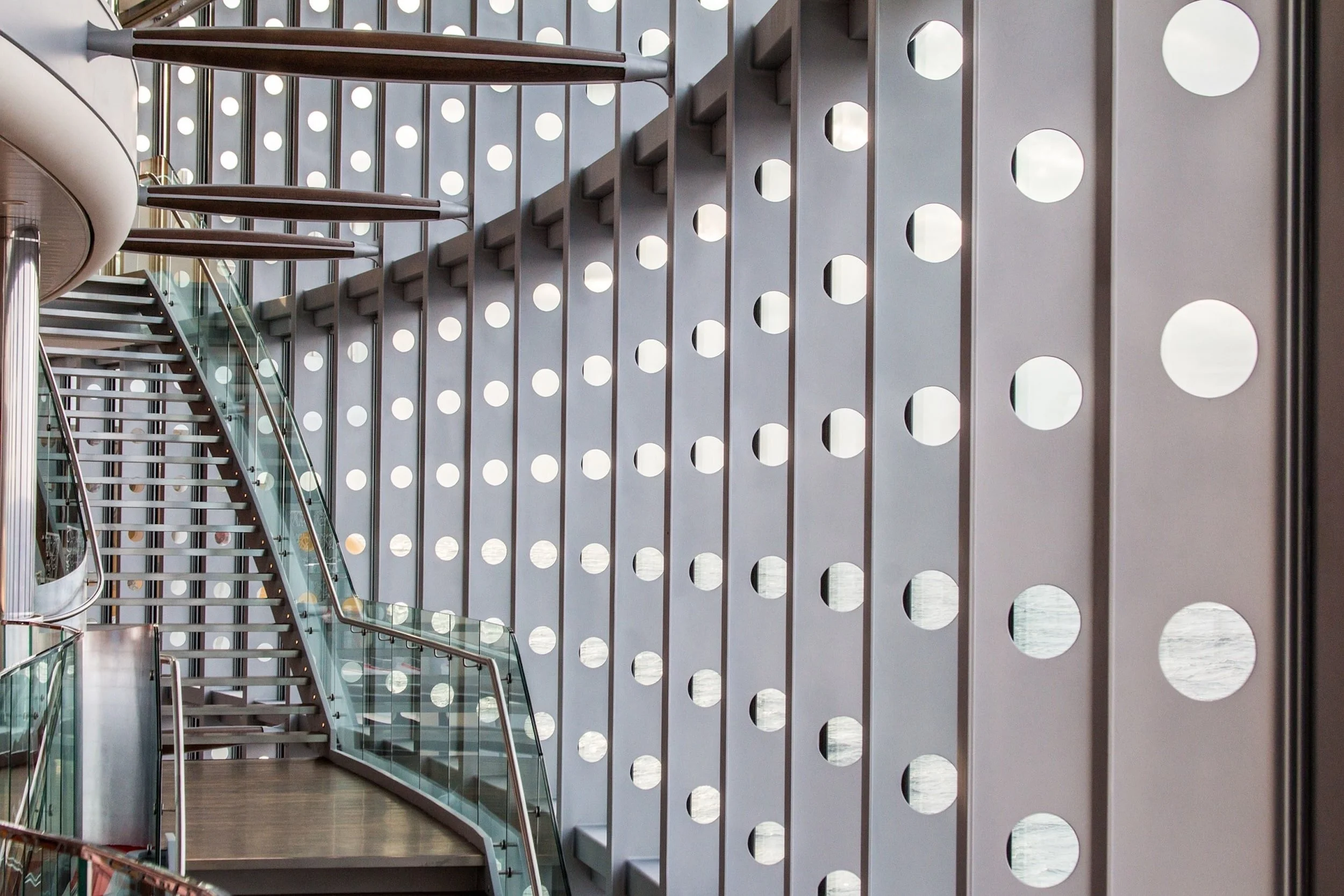Role of Rhythm and Repetition in Architectural Design
Creating Harmony and Unity through Strategic Design Elements
In architectural design, rhythm and repetition are essential principles that bring structure, coherence, and aesthetic appeal to a space. Just as rhythm in music creates a sense of flow and movement, rhythm and repetition in architecture help to create a harmonious and visually engaging environment. Understanding and applying these principles can significantly enhance the overall impact of a design, making it not only more cohesive but also more compelling.
In this blog post, we'll delve into the significance of rhythm and repetition in architectural design and explore how these concepts can be effectively integrated to achieve balanced and captivating spaces.
texture created by repetition
The Principles of Rhythm and Repetition
Rhythm in architecture refers to the pattern and flow created through the careful arrangement of design elements. It establishes a sense of movement and continuity, guiding the eye and creating a harmonious visual experience.
Repetition involves the recurrence of specific design elements or motifs throughout a space. It reinforces the overall design theme and creates a cohesive and unified look.
Impact on Architectural Design:
Visual Harmony: Rhythm and repetition contribute to a sense of visual harmony and order, making spaces feel more organized and intentional.
Enhanced Aesthetics: Strategic use of repetition can elevate the aesthetic quality of a design, adding interest and sophistication.
Guided Experience: Rhythm helps in guiding the viewer’s experience through a space, creating a sense of progression and flow.
Cohesive Design: Repetition ties together various elements of a design, ensuring that different parts of a space feel connected and integrated.
Key Elements of Rhythm and Repetition in Architectural Design
Creating an effective rhythm and repetition involves careful consideration of various design elements. Here are the key aspects to focus on:
1. Architectural Form
Building Massing: Repetition of building forms or volumes creates rhythm and a sense of continuity in a structure’s exterior.
Facades: Employ rhythmic patterns in façade design, such as repeated window arrangements or modular panels, to achieve a cohesive appearance.
2. Materials and Textures
Material Consistency: Use repeating materials or finishes throughout a building to establish a unified look.
Textural Patterns: Integrate repetitive textural patterns, like brickwork or stone cladding, to add visual interest and depth.
3. Structural Elements
Columns and Beams: Repeated structural elements, such as columns or beams, can create a rhythmic pattern that enhances the sense of stability and order.
Grids and Frameworks: Employ rhythmic grids or frameworks to organize space and provide a visual guide for the design.
4. Architectural Details
Window and Door Placement: Consistent placement of windows and doors throughout a structure creates rhythmic patterns and aligns with the overall design theme.
Moldings and Trim: Repetition of moldings, trims, and other details adds elegance and reinforces the design motif.
5. Interior Design
Floor Patterns: Repeating patterns in flooring materials, such as tiles or wood planks, create a rhythmic visual flow within interior spaces.
Ceiling Treatments: Use repeated design elements in ceiling treatments, such as exposed beams or coffered ceilings, to enhance spatial perception.
6. Lighting Design
Repetitive Fixtures: Incorporate repeating lighting fixtures or patterns to create a rhythmic lighting scheme that enhances the design.
Illumination Patterns: Use lighting to accentuate rhythmic elements and highlight design motifs throughout the space.
7. Landscaping and Exterior Design
Pathways and Gardens: Create rhythmic patterns in landscaping, such as repeating plant species or paving patterns, to extend the architectural rhythm outdoors.
Outdoor Elements: Repetition of outdoor design elements, like pergolas or trellises, can unify the exterior design and enhance the overall aesthetic.
Incorporating Rhythm and Repetition: How Architects Can Elevate Design
Architects play a crucial role in integrating rhythm and repetition into architectural design. Here’s how these principles can be effectively applied:
Design Consistency: Ensure that rhythmic patterns and repeating elements are consistent throughout the design, creating a cohesive and unified look.
Harmonious Flow: Utilize rhythm to guide the flow of movement through a space, enhancing functionality and visual appeal.
Balanced Proportions: Achieve a balanced design by carefully proportioning repetitive elements and maintaining a harmonious scale.
Visual Interest: Introduce variations in repetition to maintain visual interest while preserving overall coherence.
Contextual Relevance: Adapt rhythmic patterns and repetitions to fit the context and style of the project, ensuring that they complement the surrounding environment.
Conclusion
Rhythm and repetition are fundamental principles in architectural design that contribute to visual harmony, aesthetic appeal, and spatial coherence. By thoughtfully integrating these elements, architects can create spaces that are not only beautiful but also engaging and functional. Understanding and applying rhythm and repetition can transform a design from ordinary to extraordinary, enhancing the overall experience and impact of the space.
At Spire Architecture Inc., we specialize in creating innovative and cohesive designs that embrace the principles of rhythm and repetition. Our expert team is dedicated to crafting spaces that reflect your unique vision while ensuring a harmonious and captivating experience.
Ready to explore the power of rhythm and repetition in your next project? Contact us today to schedule a consultation and discover how we can bring your architectural vision to life.
For more insights on architectural design and innovation, explore our blog and follow us on social media for the latest updates and inspiration.
Spire Architecture Inc. is a boutique architectural design-build firm based in northern California.




